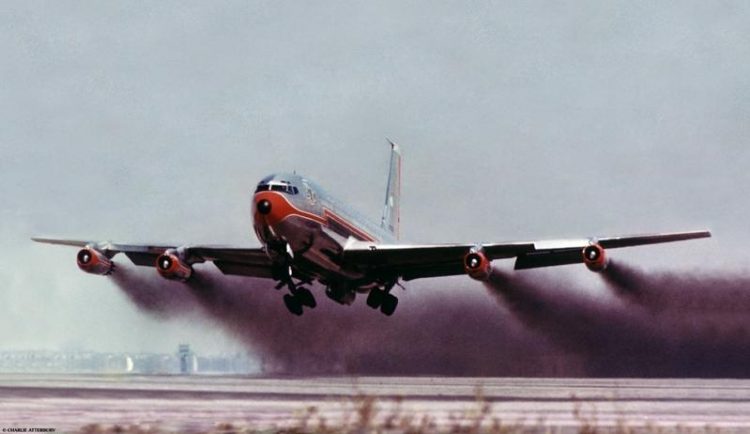Jet engines to become cleaner in future

Aircraft engines emit soot. Picture: Charlie Atterbury, Seattle
Since the 1980s, large aircraft engines have been required to meet emission limits that have been gradually tightened over time.
Air traffic, therefore, contributes relatively little to Switzerland's pollution levels, and visible smoke trails in the sky from jet engines are a thing of the past. However, no-one has yet found a solution to the emission of ultra-fine particles from jet engines.
These microscopically small particles can penetrate deep into the lungs and thus adversely affect health. As a precautionary measure, these emissions from air traffic will now also be measured, regulated and reduced, even though air traffic produces less than 1 percent of Switzerland's fine particulate emissions.
From a technical standpoint, measuring ultra-fine combustion particles is extremely complex. As part of a close collaboration between Empa, SR Technics and FOCA experts have spent years developing a standard test setup and method that can be used to measure fine particulate emissions from aircraft engines.
Both the measuring system and the corresponding instruments were tested by way of international cam-paigns until they were considered ready for deployment. The measuring system gives the mass of the particulate matter as well as the number of particles emitted per liter of fuel. It even captures the smallest particles with diameters of less than a hundred-thousandth of a millimeter.
The work on this new global standard was led by FOCA in partnership with the US aviation authority. On 2 February in Montreal, the ICAO's Committee on Aviation Environmental Protection approved the new standard, which relies heavily on contributions by FOCA, SR Technics and Empa. Final approval of the standard is expected by the ICAO Council in one year.
All engine types for passenger aircraft that are in production as of 1 January 2020 must be certified in accordance with the new standard. Most engine manufacturers have already developed their own measuring systems that comply with the standard and have started re-measuring their engines. Technologies are also emerging that will further reduce the emission of fine particulates.
Media Contact
All latest news from the category: Power and Electrical Engineering
This topic covers issues related to energy generation, conversion, transportation and consumption and how the industry is addressing the challenge of energy efficiency in general.
innovations-report provides in-depth and informative reports and articles on subjects ranging from wind energy, fuel cell technology, solar energy, geothermal energy, petroleum, gas, nuclear engineering, alternative energy and energy efficiency to fusion, hydrogen and superconductor technologies.
Newest articles

First-of-its-kind study uses remote sensing to monitor plastic debris in rivers and lakes
Remote sensing creates a cost-effective solution to monitoring plastic pollution. A first-of-its-kind study from researchers at the University of Minnesota Twin Cities shows how remote sensing can help monitor and…

Laser-based artificial neuron mimics nerve cell functions at lightning speed
With a processing speed a billion times faster than nature, chip-based laser neuron could help advance AI tasks such as pattern recognition and sequence prediction. Researchers have developed a laser-based…

Optimising the processing of plastic waste
Just one look in the yellow bin reveals a colourful jumble of different types of plastic. However, the purer and more uniform plastic waste is, the easier it is to…



